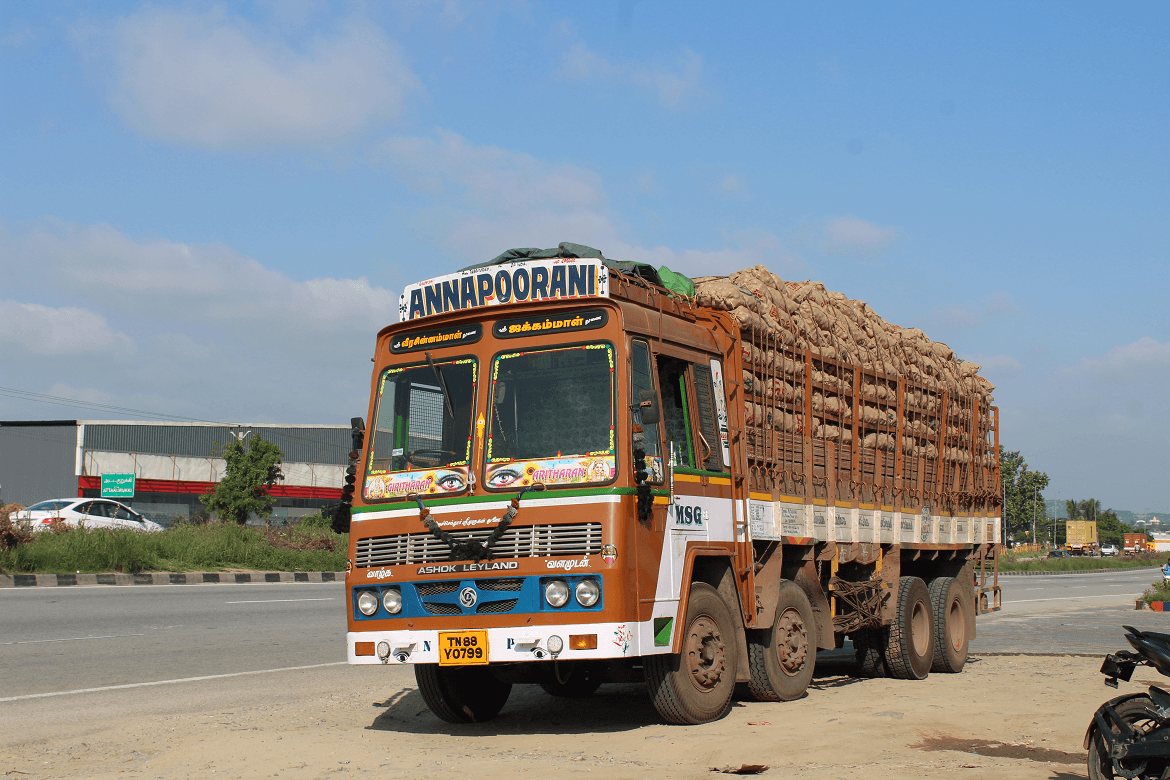Moving Indian Freight Electrification into the Fast Lane
by , and -
This is the first in a series of blogs exploring pathways to accelerate the e-mobility transition of India’s freight sector.
At COP26, India pledged to reduce the carbon intensity of its economy by 45% by 2030. The sector of transportation logistics, one of the fastest growing in India and critical to economic growth, will need to transform considerably to achieve this goal. At present, the Indian freight sector accounts for about 5% of India’s gross domestic product (GDP) and contributes to almost 14% of the country’s total greenhouse gas (GHG) emissions. This sector is also heavily reliant on fossil fuel imports as freight vehicles account for more than 40% of the diesel consumed for road-based transportation.
Currently, road freight accounts for about 71% of the overall freight movement in the country and is pegged to experience further growth, driven mostly by the development of highways and road networks across the country and the limitations of Rail freight, which faces the challenges of integration and insufficient system capacities. The decarbonization of the road freight sector will need focused strategies and electrification of intercity freight is projected to be one of the most impactful of them and must be treated as a priority.
Enabling Dialogue and co-creation and crowdsourcing
The Indian trucking sector is primarily owned by individuals and small fleet owner-operators. The disaggregated nature of the industry indicates that any reform in the sector will require a more collaborative approach. In addition to the new distance ranges that need testing for electric vehicles for road-based freight, the sector also has a wide range of commodity-based transport leasing models and associated operational use-cases, for which viabilities need to be established. For instance, transportation of cement is charged on a km/per ton basis and may involve movement through different terrains whereas fast moving consumer goods (FMCG) movement is charged per km, more predictable terrains, but time bound with little flexibility. Establishing the viability of such use cases is complex as several factors can affect performance, including topography, climate, temperature, road conditions and battery weight. Enabling dialogue and information exchange between the demand and supply sides of the ecosystem, will help accelerate this testing by helping match products to operational requirements and specific infrastructural needs.

The electric freight sector is also currently grappling with the lack of data for analytics based trials and the ambiguity on the lifecycle, performance, and viability of electric freight vehicles. This lack of aggregated data on freight movement makes the transition more challenging and the undocumented reliability of products has led to, limited access to financing options.in the sector Freight companies currently rely primarily on investor capital or customized financing packages with non-banking financing companies. A scaled-up transition will need both aspects addressed
Supporting test case pilots that allow for assessing viability can create useful data sets. This will instill greater confidence in the ecosystem which in turn can lead to accelerated adoption. Pilot learnings will also be crucial in informing supportive legislation and incentive mechanisms. Greater clarity on regulatory mechanisms and long-term national plans can also aid smoother implementation. The process of enabling this cycle will need to be jumpstarted by creating curated opportunities for government-industry conversations, and crowdsourcing of data and partnerships for experimentation and deployment.
Supporting India’s Climate Goals Through Collaborative Action
There has already been some significant reforms enabled in this sector with the recently launched National Logistics Policy, laying down a comprehensive framework for the development of India’s estimated USD 200 billion logistics sector. This framework aims to improve logistical efficiencies and reduce transportation costs which will have important implications in the decarbonization of the sector. E.g. Logistics policy promotes the development and adoption of digital systems such as ‘Smart Road Enforcement App' for implementation of rules and regulations related to road based violations. The app will help decreasing travel time impediments through addressing aspects such as the number of physical checks needed for commercial vehicles enroute and therefore the associated delays. While the implementation of GST has already helped considerably, greater efficiencies can be achieved through further technological interventions.
Building upon the efficiencies introduced by this policy, electrification enabled through coalition of relevant stakeholders, will further help to make road freight cleaner and greener. This transition can be catalyzed with a focus on innovation and collaboration among different ecosystem players including policymakers, manufacturers, logistics companies, financiers, and customer industry representatives. Cross-sectoral knowledge sharing and peer-to-peer learning, at the state, national and international levels, can enable more informed decision-making which is integral to shaping robust policies in the future.
Enabling freight electrification in India requires predictable and seamless day-to-day operations, reduced system-level inefficiencies, and established viabilities of different use cases to enable a supportive ecosystem transition. Creating a platform that brings all stakeholders together will allow India to shift gears and put heavy-duty freight electrification on the fast track.


